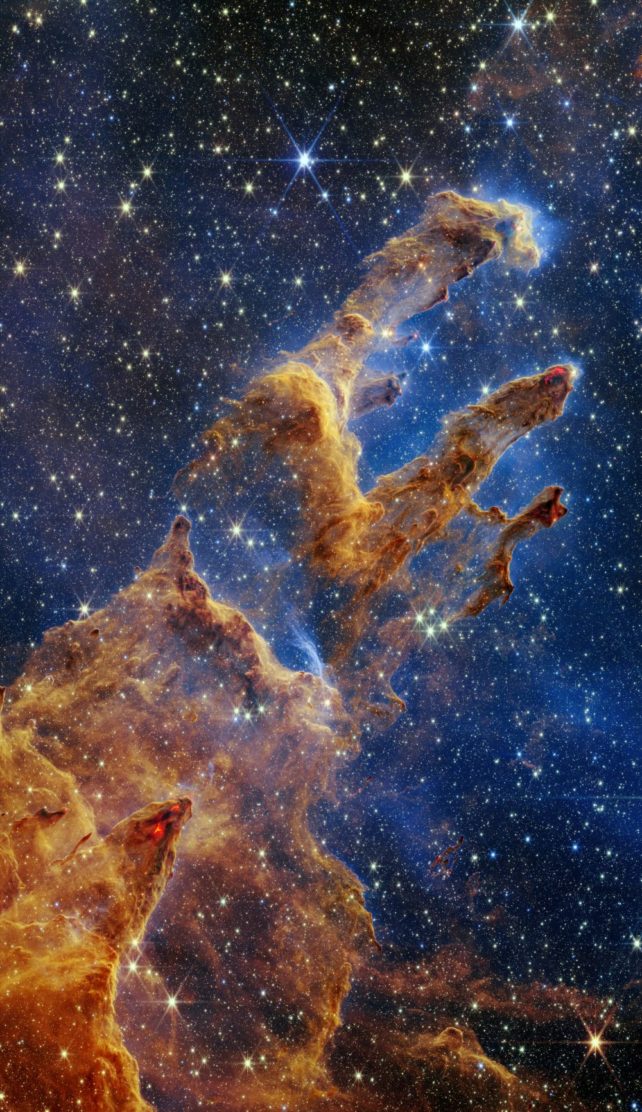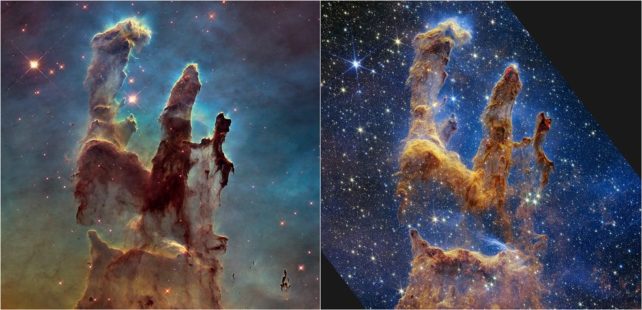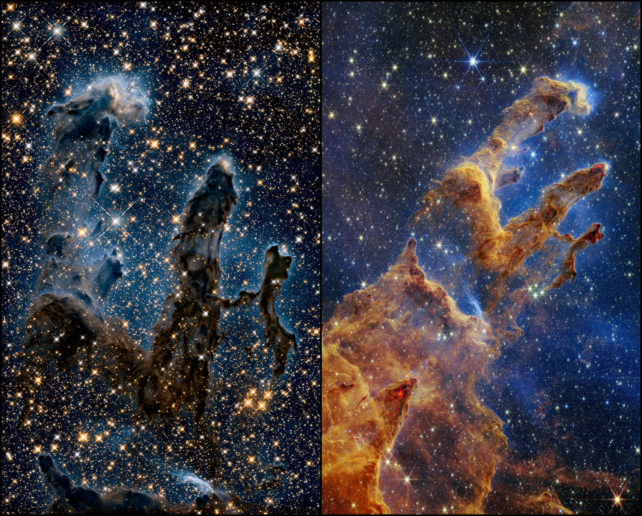by Michelle Starr: One of the most anticipated images from the James Webb Space Telescope has finally arrived…
With its segmented golden eye, the JWST has gazed deep into the heart of the Eagle Nebula 6,500 light-years away, serving up an incredible infrared view of the famous structures known as the Pillars of Creation.
Protruding into the cavity of a vast cosmic cloud like giant’s fingers, the Pillars first rose to prominent attention when the Hubble Space Telescope – then just five years into its ongoing mission – imaged the region in 1995. The structures were like nothing we’d ever seen before; majestic clouds of glowing thick dust and glowing gas extending several light-years into space.
Now the JWST, the most sensitive space telescope in history, has given us the most detailed image of the structures yet.

Astronomers have been itching to get the JWST’s perspective on the pillars, not just for its stunning beauty, but because of the activity they contain. The structures are what are known as stellar nurseries – dusty clumps in a nebula in which baby stars are born. This occurs when swirling knots in the dust collapse under gravity, and starts accumulating more material from the cloud around it.
Once a star gets big enough, its winds and radiation blast away the surrounding dust. Or so the theory goes – those early stages of star formation are literally shrouded from sight.
Our best hope of peering inside is to look for the infrared light that seeps through, since the longer wavelengths don’t scatter off dust particles like the shorter wavelengths of optical light. Instead, they can travel through the dust, meaning infrared instruments can effectively see through walls of dust in space.

We’ve seen the Pillars of Creation in infrared light before. NASA’s Spitzer Space Telescope captured the scene in 2007, and the European Space Agency’s Herschel Space Observatory gave us an infrared view of the Eagle Nebula in 2012. Even the Hubble Space Telescope got in on the action with this infrared image, taken in 2014.
But JWST is far more powerful than any of these instruments, and its image of the Pillars of Creation shows new details. For instance, red regions seen at the tips of the Pillars are evidence of baby stars in the process of blasting away dust. Shocks arising in this process produce heat visible as infrared thermal radiation.

This means that scientists will be able to use the image to conduct a more thorough and accurate census of star formation in the dense clouds – as well as shed new light (literally) on the early stages of star formation, which have historically been extremely difficult to observe.
And for everyone else, the new image is a breathtaking spectacle that reminds us just how beautiful the Universe can be.










































